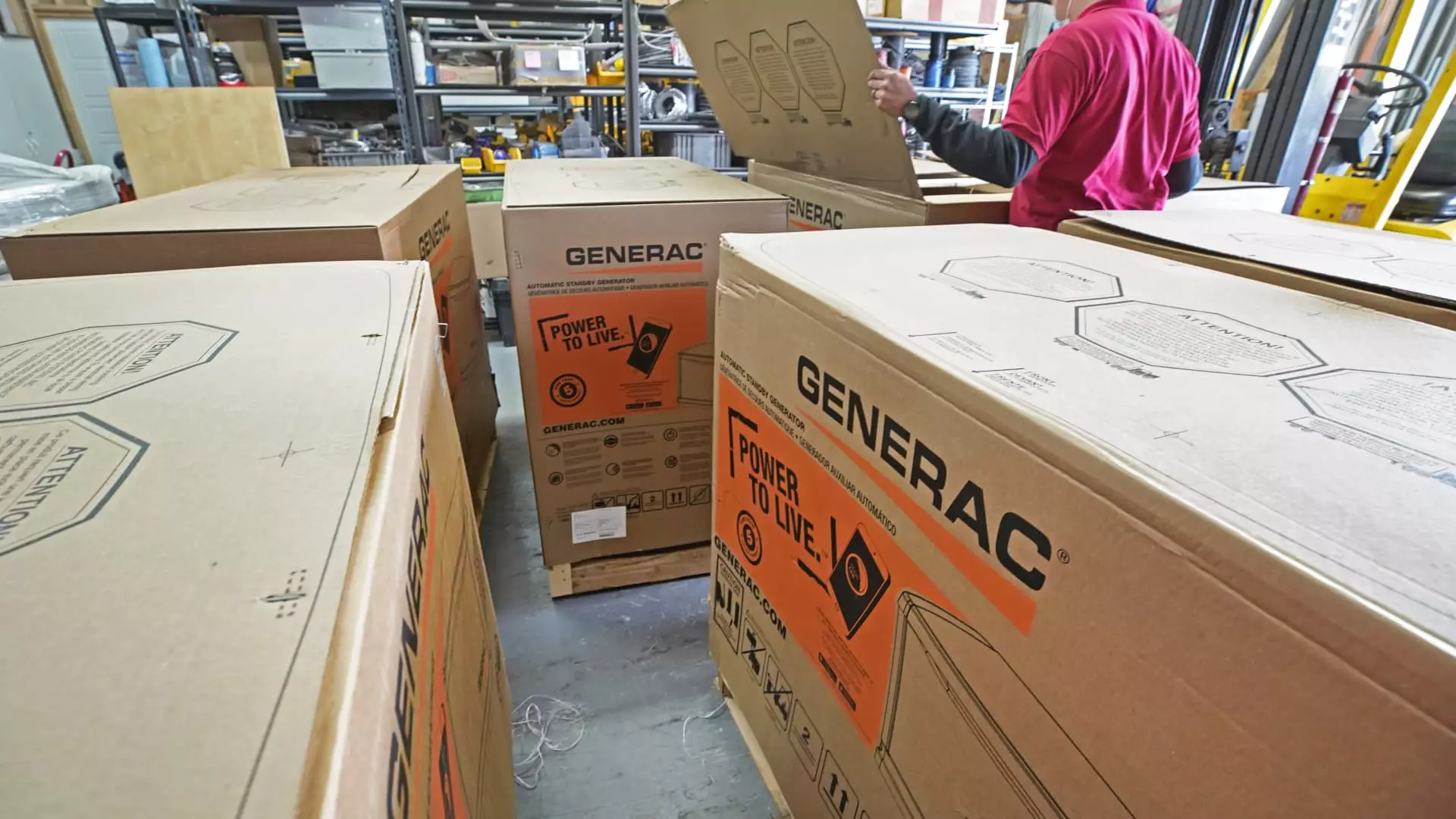As we navigate through a sweltering summer, the confluence of rising temperatures and an unpredictable hurricane season has sparked a wave of interest among investors, particularly in companies like Generac, a leader in backup-power generators. Reports show that Generac’s stock is on a remarkable bull run, recording nearly a 12% surge this week alone. But let’s pause and consider why this surge is not just a blip in the stock market but rather a glaring symptom of deeper, systemic issues in our energy infrastructure.
This year, extreme weather patterns are not mere anomalies; they are stark reminders of the precarious state of our climate. The National Weather Service has made it clear: we are witnessing extreme heat affecting roughly 130 million people, with power outages becoming increasingly commonplace. These outages emanate not just from the strain placed on an already overburdened electrical grid but reflect a broader, more troubling truth about the fragility of our national energy framework. Is it any surprise that investors are now keenly eyeing companies that offer temporary reprieves from our climate-induced chaos?
Hurricanes and Heat Waves: Are We Prepared?
Compounding this scenario is NOAA’s projection of a particularly active Atlantic hurricane season, predicting 13 to 19 named storms, including a few that could evolve into catastrophic hurricanes. Recent studies have alarmingly indicated that, due to climate change, the likelihood of power outages caused by hurricanes could jump by more than 50% in certain areas. If we consider these forecasts seriously, it becomes unequivocally clear that our nation’s power grid—an aging system designed decades ago—is woefully ill-equipped for the challenges haunting modern America.
Generac’s CEO, Aaron Jagdfeld, put it succinctly on CNBC’s “Mad Money”: this critical conversation around energy reliability is becoming increasingly urgent. As temperatures rise and storms become more volatile, just how long can a patchwork grid sustain us? It calls into question the adequacy of our current solutions—and investors should be cautious about viewing the stock price surge as merely a sign of market savvy.
An Unstable Profit Landscape
While savvy investors may flock to stocks like Generac or Trane Technologies—manufacturers of cooling systems that seem primed for growth—there’s also an inherent risk. We are not just investing in products; we are effectively investing in a national narrative about climate resilience. Will the surge in demand for backup generators and cooling systems translate into sustainable growth, or are we merely chasing the tail of an ever-increasing crisis?
Moreover, while utility stocks are expected to gain from the uptick in power demand, analysts at Bank of America have outlined a differentiated approach, favoring companies with embedded growth catalysts. This type of selectivity raises a critical point: in a landscape that is transforming so rapidly, merely keeping pace is not enough. Companies must innovate, adapt, and prepare to meet the volatility head-on. It’s not just about stock prices; it’s about whether these companies can genuinely contribute to a solution in a time of escalating climate concern.
Future Vision: A Collective Responsibility
It’s time for us—investors, consumers, and policymakers—to reflect on our collective role in this crisis. As data centers proliferate and energy demands soar, we have to ask ourselves: are we simply sitting back and waiting for the next natural disaster to drive our investment strategies, or are we proactively advocating for systemic change?
As climate-related events worsen, we need energy solutions that are not only sustainable but equitable. The current trends may suggest a lucrative opportunity for some; however, the question remains whether today’s investments will safeguard tomorrow’s environment.
Investing should be about setting foundations for a resilient future. Instead of merely betting on companies that profit from the chaos, let’s demand that they also serve as stewards of change and innovation in energy infrastructure. Only through a genuine commitment to sustainable practices can we ensure that our investments serve a greater purpose beyond immediate profit margins.

